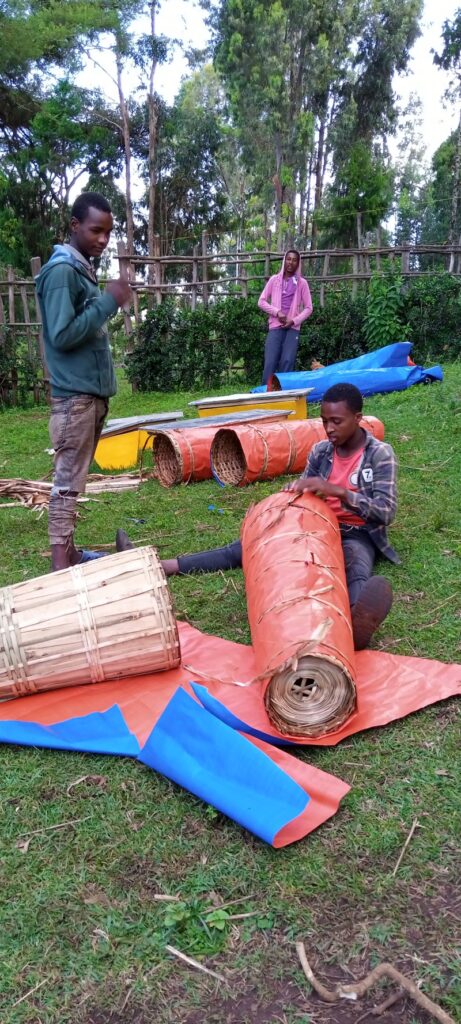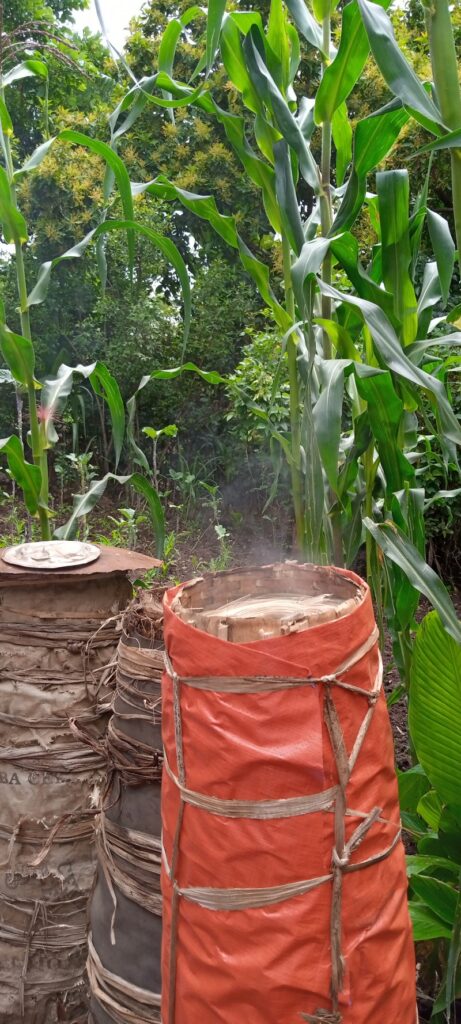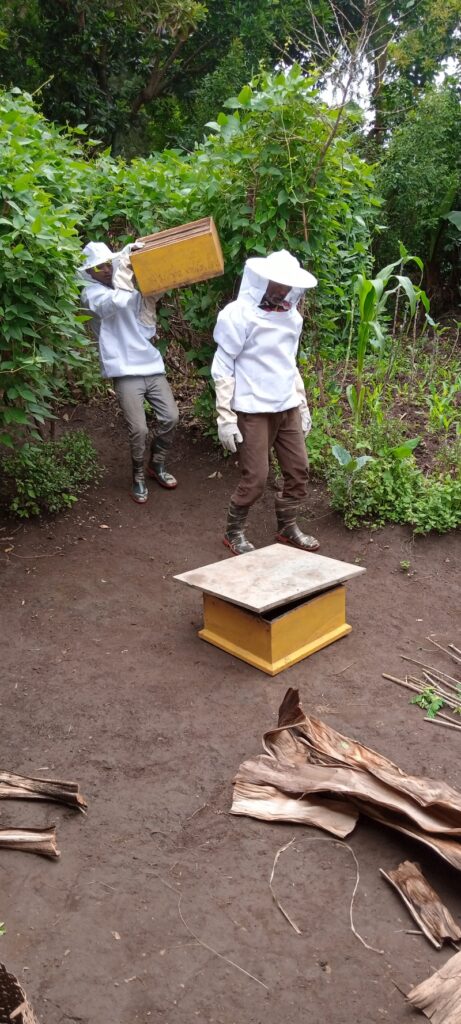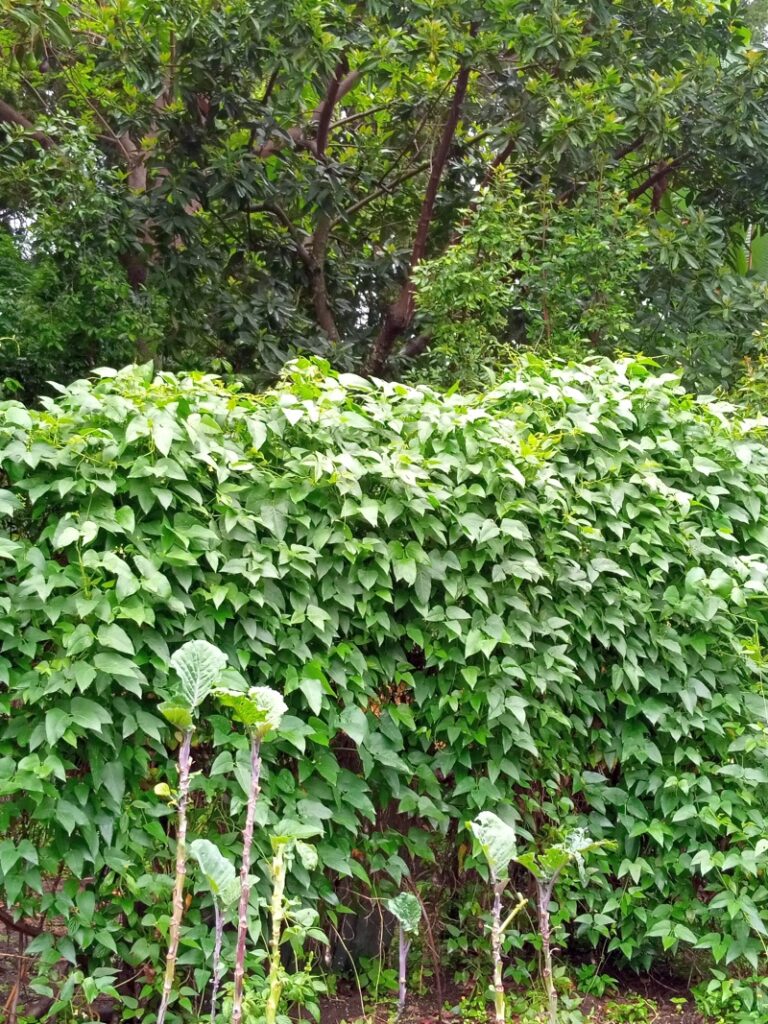Durame: actual situation of Bee and Tree – Laudato Si
PBF has supported the Yonas Zekarias family in beekeeping in Doano village in Durame South Ethiopia for several years. We have both traditional and modern hives, we are happy to share and encourage other groups and individuals in our area with the knowledge and experience we have gathered over the years. Of late, PBF has funded an additional number of hives for our group project.
The hives are readily available and we bought ours in Wolayta Soddo, some 50km away from Durame. We bought both German and Kenyan model beehives.
We started by hanging the hives on the trees after smoking them by smoke from cow dung to make them smell and attract the bees. This is the traditional method that still works very well to attract the initial colonies.


The traditional hives which are made from bamboo or types of straw are very good in attracting bee colonies. They are very important and that is why we use both the traditional hive together with modern hives. We cover them with plastic cover to protect them from rain for their durability. The farmers have noticed that bees like yellow color and this is why we cover the hive with yellow plastic or paint the modern hives yellow. The plastic cover also help to prevent insects from entering the hive.The cover also helps to keep the temperature warmer especially during the cold weather.
Bees like tree with best shade with maximum possible silence. Bees prefer trees with large lives and better smelling flowers. In Doano area, Olooncho tree is considered as the ‘king’ trees for bees. Other trees like Gentancho tree and Mesencho tree are also good trees for bees.
Hive beds
Once we get the bees from over the trees, we bring the hives to the garden where we place them on a bed like structure raised not higher than 1 meter.

We usually keep 5-10 beehives in one structure , this saves a lots of space for holding more beehives. The hight of the structure is appropriate when it comes to harvest time.
Shading and fencing beehives in the garden:
Bees like silence and do not like too much movement around. In addition, it is also wise to keep animals and even people away from around the bees. Bees can be dangerous when disturbed.
A simply shed is necessary to protect the hives from strong winds heavy storm and direct sunshine. The protective fence around the hives could be made with green live fence that can also be of benefit to the bees as food from the flowers.

In Doano we have identified passion fruit as a very good plant for the fence.It grows very fast, it is a climber plant appropriate to cove the fence and also a fruit for consumption and sale.The other important plant for fence sheltering the hives is the Lima. This plant also grows very fast producing long protective and shady branches in a short period of time Planting both passion fruit plant and Lima tigether side by side results into a very strong fence compsred to wire fence.Lima to us is the living “mena” for those who know and use it. We are happy to share the seeds with other interested groups because it is effective an effective ‘green’ innovation and cheap compared to other types of fences which have no any other value to the bees.
Transferring bees from traditional beehives to the modern beehives:
We have already talked with district agricultural extension office to help us transfer the bees from existing traditional beehives to the new modern beehives for better yield.
New colonies:
It has been rainy for several weeks now and therefore we wait for guess dryer and sunny days for the bees to start moving around to be able to discover the new hives ready for new colonies.
The trees which bees like are starting flower this week and may continue to flower till mid of June. We hope, we will get dozens in the upcoming weeks. As we could see from beehives in our garden, it seems that bees are in the best form to multiply this month.
Yossy/Dan
